A spectacular sight soaring over coastlines of Russia and northeast Asia, Steller’s sea eagles (Haliaeetus pelagicus) rank as one of the world’s largest birds of prey, with their vast wingspan measuring between 1.95 and 2.50 m (6 ft 5 in to 8 ft 2 in).
But just how big are Steller’s sea eagles, and how do they compare to other raptors? Keep reading if you’re interested in learning more about these giants of the Pacific Ocean skies.
Steller’s sea eagles are often dubbed the world’s heaviest eagle, although some sources claim the Harpy eagle weighs more. With a maximum recorded mass of 9.5 kg (20.9 lb) and wingspan of up to 2.5 m (8 ft 2 in), Steller’s sea eagles are undoubtedly one of the largest eagles in existence today.
Native to coastal environments, Steller’s sea eagles’ diet comprises largely of fish, supplemented with carrion from aquatic animals and seabirds, and they hunt regularly to ensure their vast energy needs are met.
Their enormous paddle-shaped wings enable them to soar relatively effortlessly over marine waters, scanning for prey in the ocean below.
To learn more about the vital statistics of these colossal yellow-billed raptors, read on, as we’ll be exploring just how big Steller’s sea eagles can grow, and how they use their size to their own advantage.
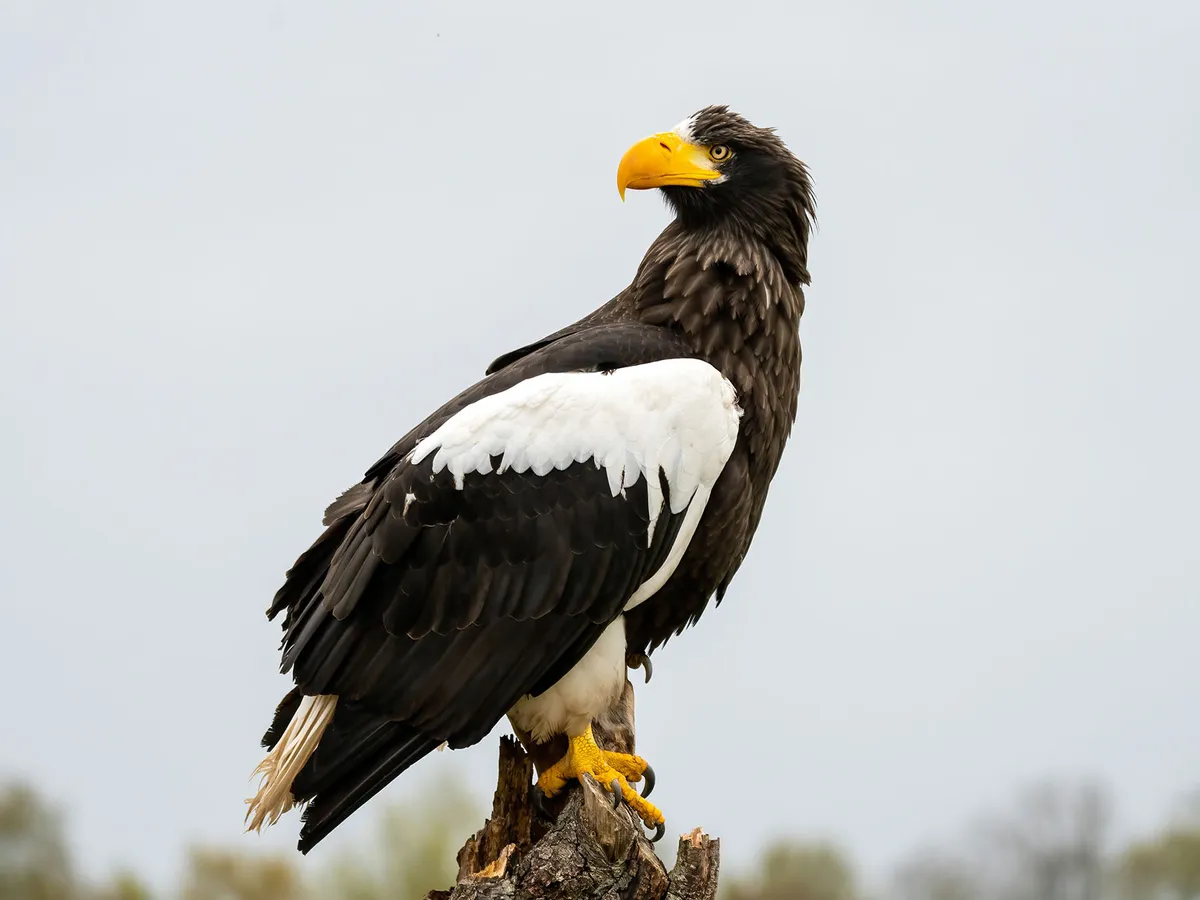
Steller’s Sea Eagle wingspan
The wingspan range of Steller’s sea eagles is usually quoted as being between 1.95 and 2.50 m (6 ft 5 in to 8 ft 2 in).
No verified records exist to support some of the vast wingspan measurements at the upper end of the range, with claims of 2.7 m (8 ft 10 in), 2.74 m (9 ft 0 in) and 2.8 m (9 ft 2 in) appearing in some anecdotal reports.
Female Steller’s sea eagles are larger than males in wingspan, mass and length, and where a measurement range is given below, the greater limits of the range will have been noted in females of the species.
- Wingspan average: 2.13 m to 2.2 m (7 ft to 7 ft 3 in)
- Wingspan range: 1.95 m to 2.50 m (6 ft 5 in to 8 ft 2 in)
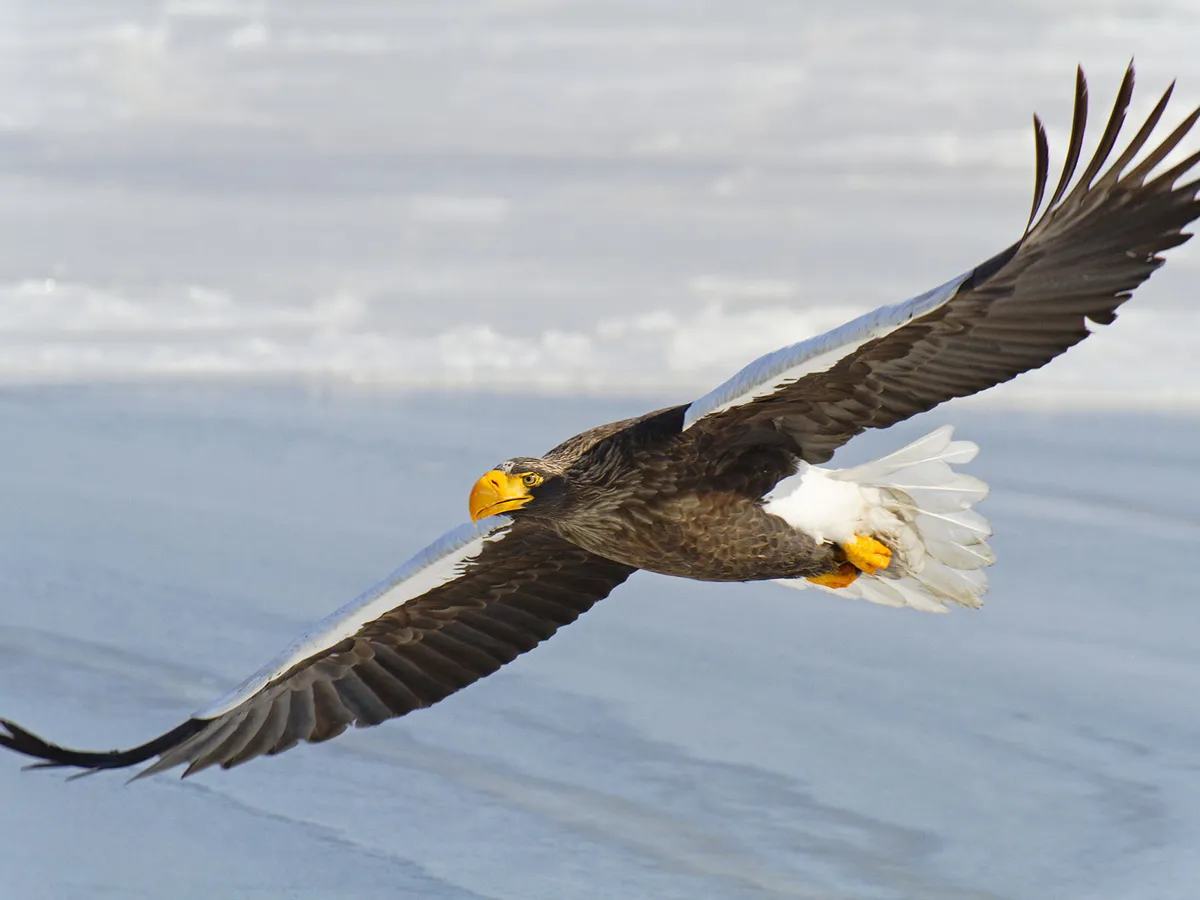
Steller’s Sea Eagle weight
Female Steller’s sea eagles are significantly heavier than their male counterparts, with masses in excess of 9kg recorded. According to data, females can weigh up to 79 percent more than males.
- Steller’s sea eagle mass range (male): 4.9 kg to 6 kg (10.8lb to 13.2lb)
- Steller’s sea eagle mass range (female): 6.8 kg to 9.5 kg (15lb to 20.9lb)
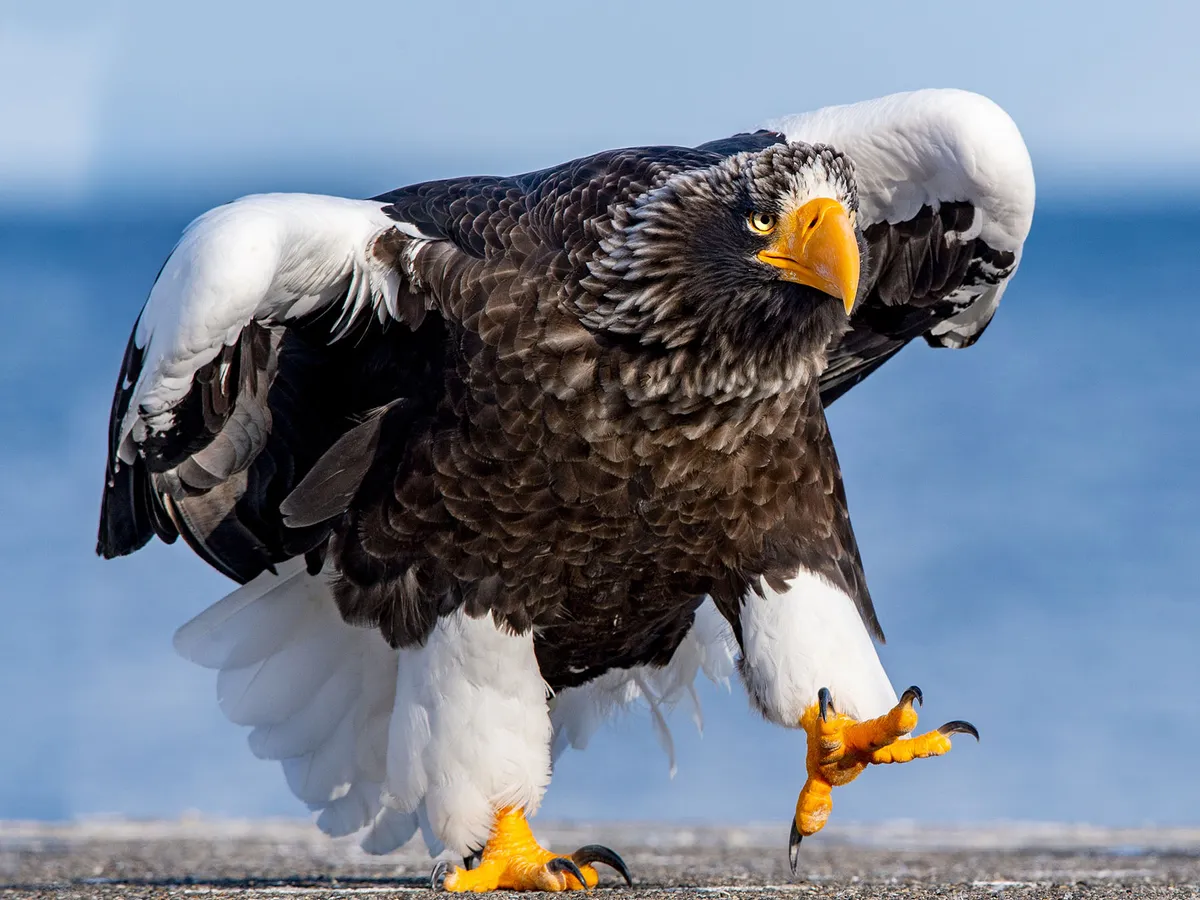
Female Steller’s Sea Eagles can reach 9.5 kg
How big are Steller’s Sea Eagles compared to a human?
The wingspan of a Steller’s sea eagle eclipses the height of even the tallest humans, extending in some cases to well over 2.45 m (8 ft).
From the tip of its tail to the top of its head, the largest Steller’s sea eagles measure just under 1 m (39 inches), equivalent to more than half the height of an average adult male.
How big is the biggest Steller’s Sea Eagle ever recorded?
Although no concrete evidence exists for a specific individual Steller’s sea eagle of this size, anecdotal accounts report a wingspan of 2.8 m (9 ft 2 in).
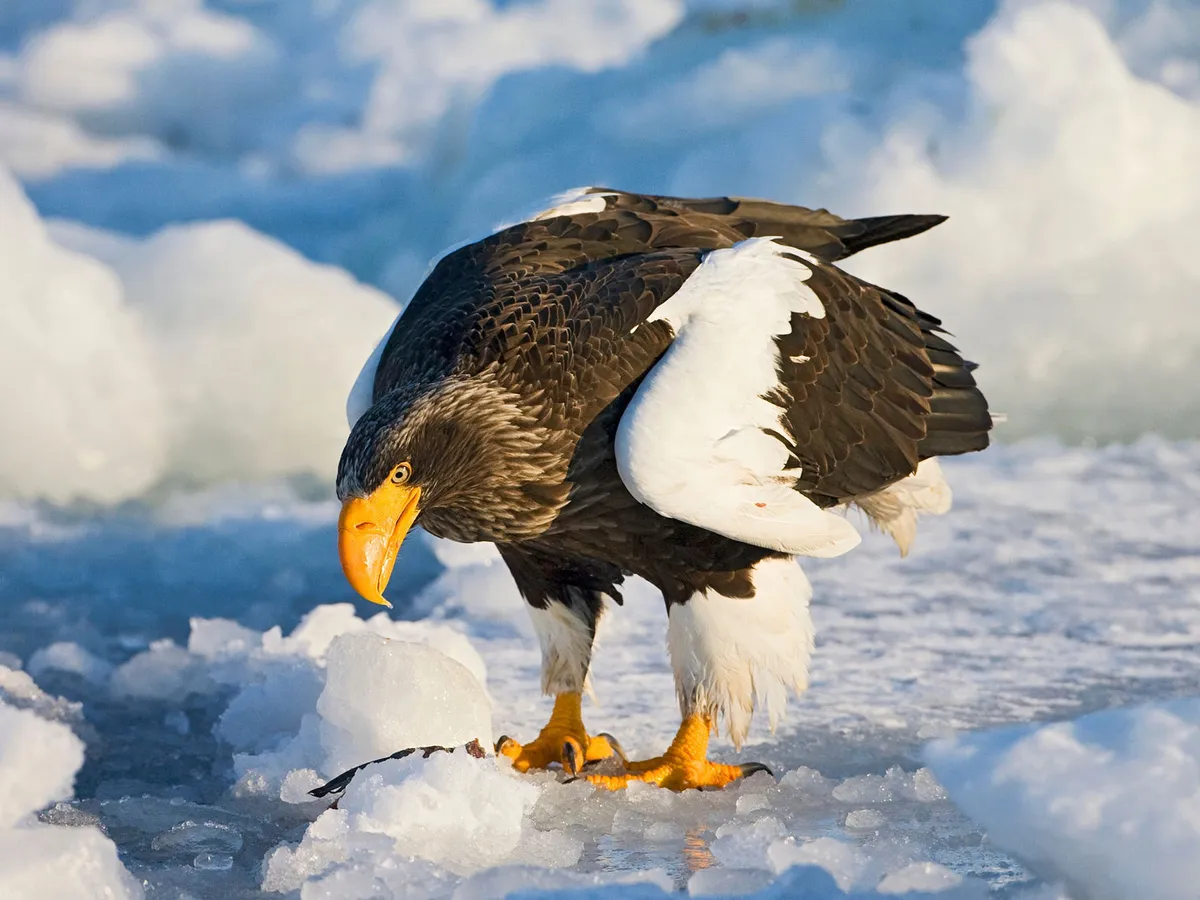
Wintering Steller’s Sea Eagle pictured in Japan
How big of an animal can a Steller’s Sea Eagle pick up?
The strength and powerful grip of a Steller’s sea eagle’s talons, together with the sheer size of its body and wings enable it to carry prey up to 7 kg (15 lb), which is even greater than its own body weight in the case of an adult male of the species.
Fish, particularly Pacific salmon, form the mainstay of the diet of a Steller’s sea eagle, although they will also hunt for and successfully carry off larger prey such as young seals, Arctic foxes and sable.
Why are Steller’s Sea Eagles so big?
The immense wingspan of a Steller’s sea eagle allows for hours of effortless gliding over marine waters, maximizing the chance of spotting prey in the oceans and river valleys below.
The powerful grip of their sizable talons and strength from their vast body weight allows them to carry off heavy prey, including large fish, Arctic foxes, young seals and hares.
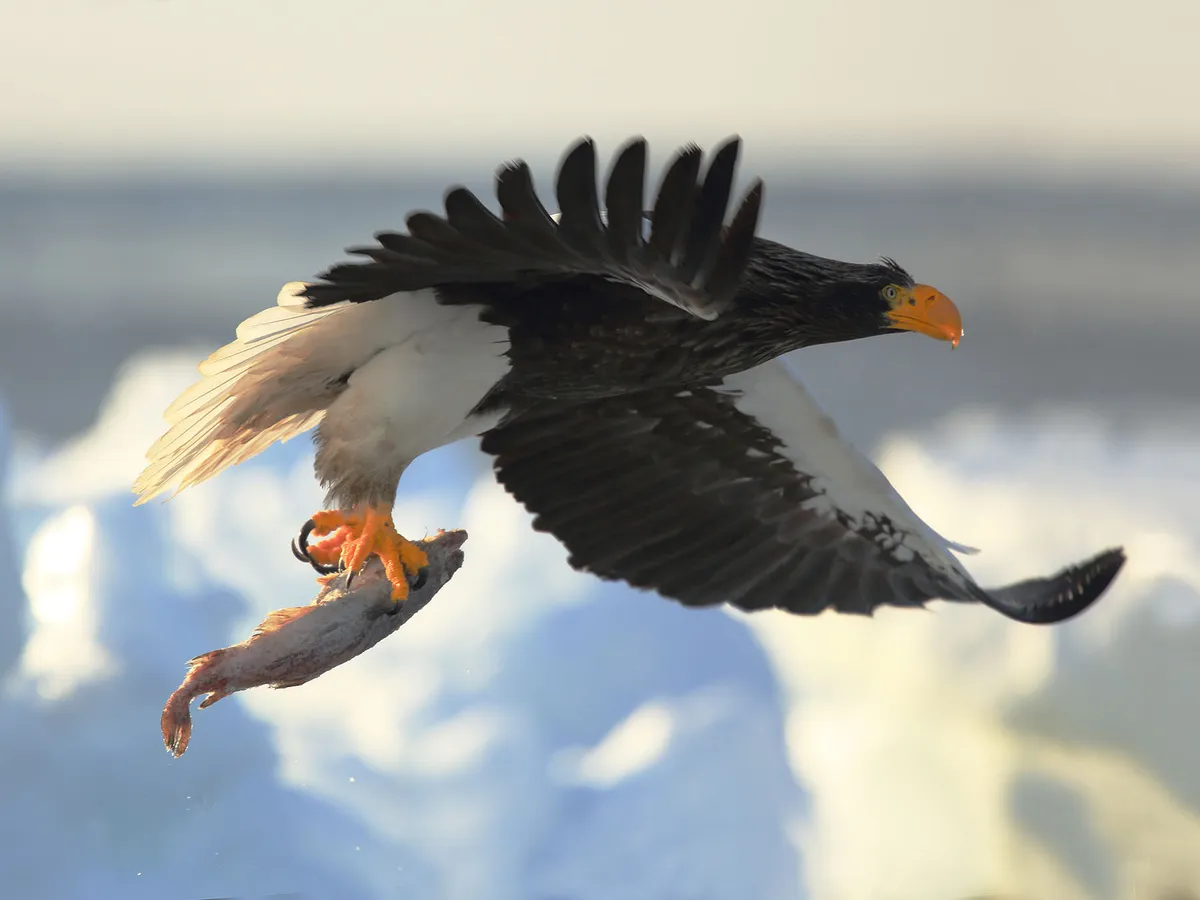
Steller’s Sea Eagle hunting fish
Steller’s Sea Eagles compared to other bird species
Although Guinness World Records states that the Steller’s sea eagle is the largest eagle, this status is sometimes challenged by the Harpy eagle and Philippine eagle, depending on what criteria are used for ranking, and whether a species’ average or maximum measurements are used.
Steller’s sea eagles typically outweigh Harpy eagles by around 500 g (1.1 lb), with the heaviest female Harpy eagles weighing 9 kg (19.8 lb). Steller’s sea eagles are also heavier than other challengers, including the Philippine eagle (8 kg/ 17.6 lb) and white-tailed eagle (6.9 kg/15.2 lb).
In terms of wingspan, Steller’s sea eagles also have the edge, with maximum verified wingtip-to-wingtip measurements of 2.45 m (96.5 in), compared to the white-tailed eagle (2.44 m/96 in), Harpy eagle (2.24 m/88.1 in) and Philippine eagle (2.02 m/79.5 in). However, unverified claims of birds from these species with even larger wingspan measurements do exist.
When determining the world’s longest eagle, records indicate that the Harpy eagle claims the crown, measuring up to 107 cm (42.1 in), ahead of the Philippine eagle, with a length of 100 cm (39.4 in) and the Steller’s sea eagle, which has a maximum recorded length of between 95 and 99 cm (37.4 and 39 in).
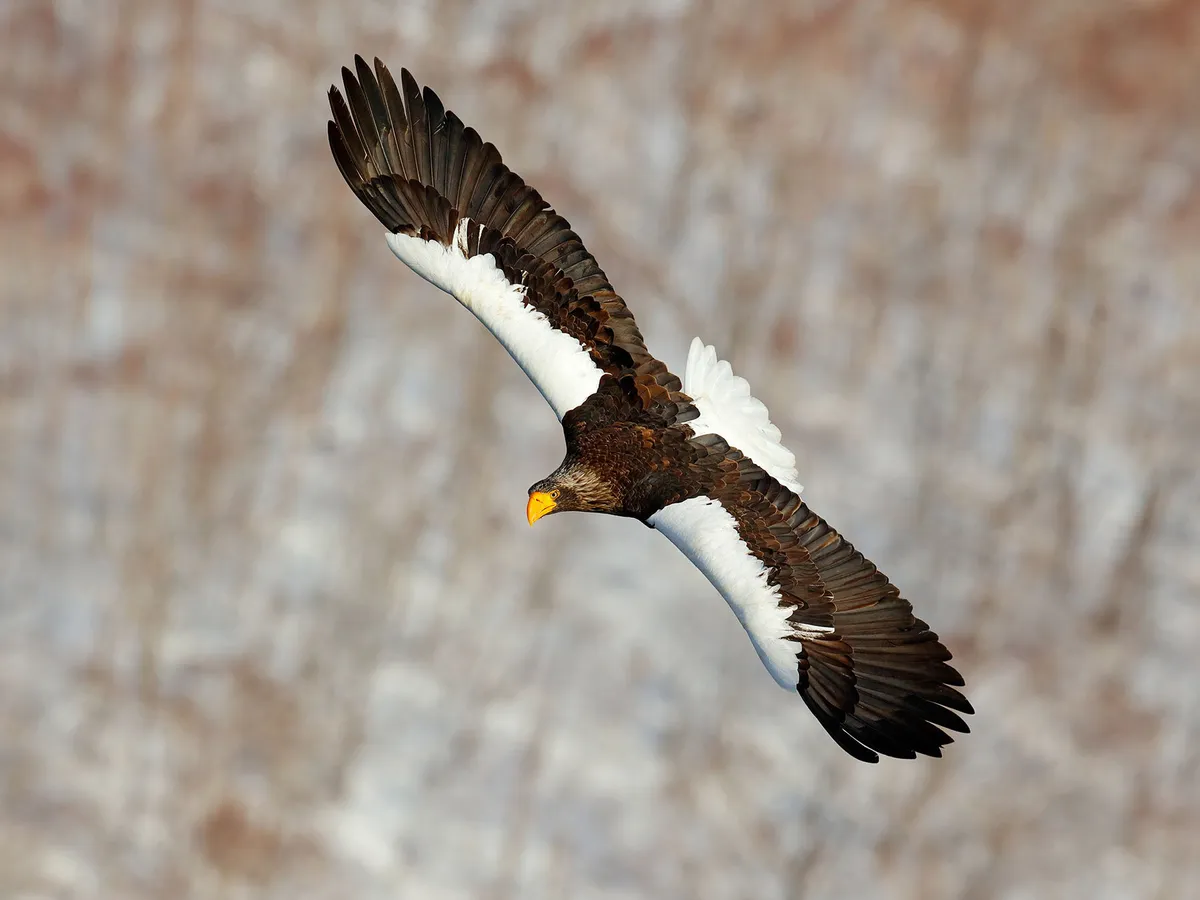
Steller’s Sea Eagle in flight, displaying its impressive wingspan


